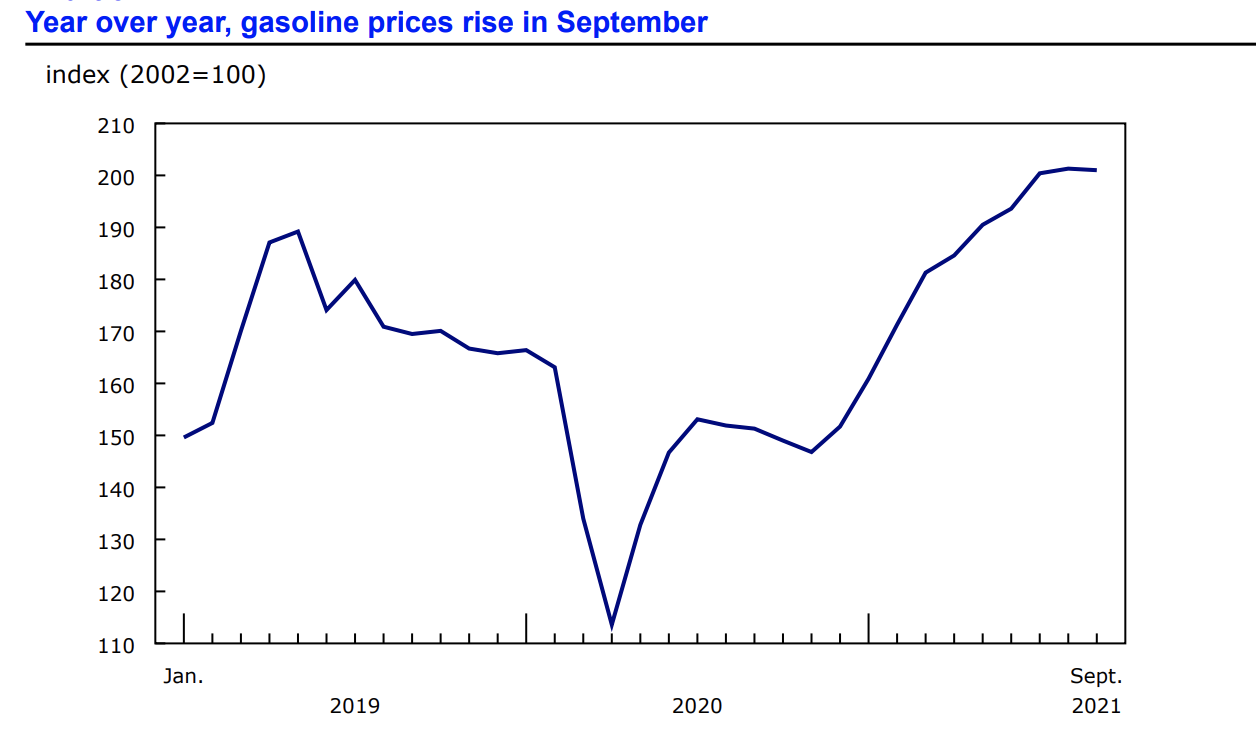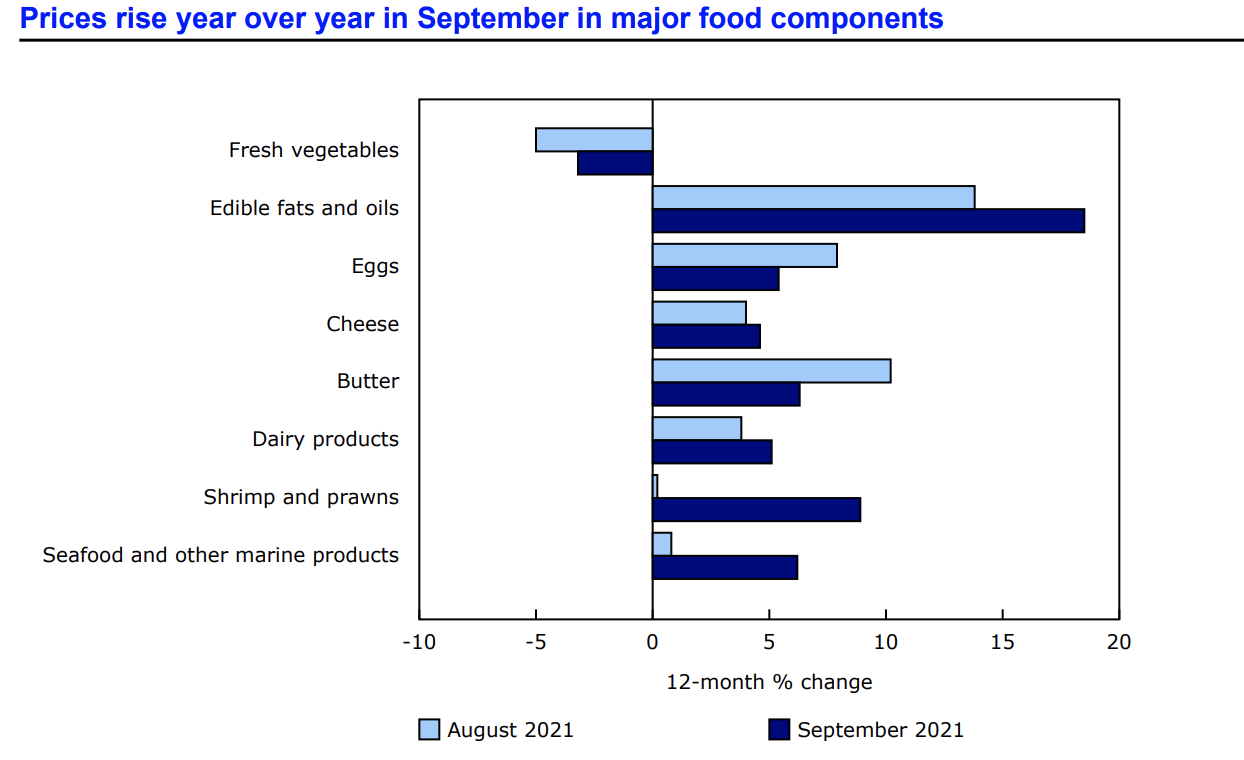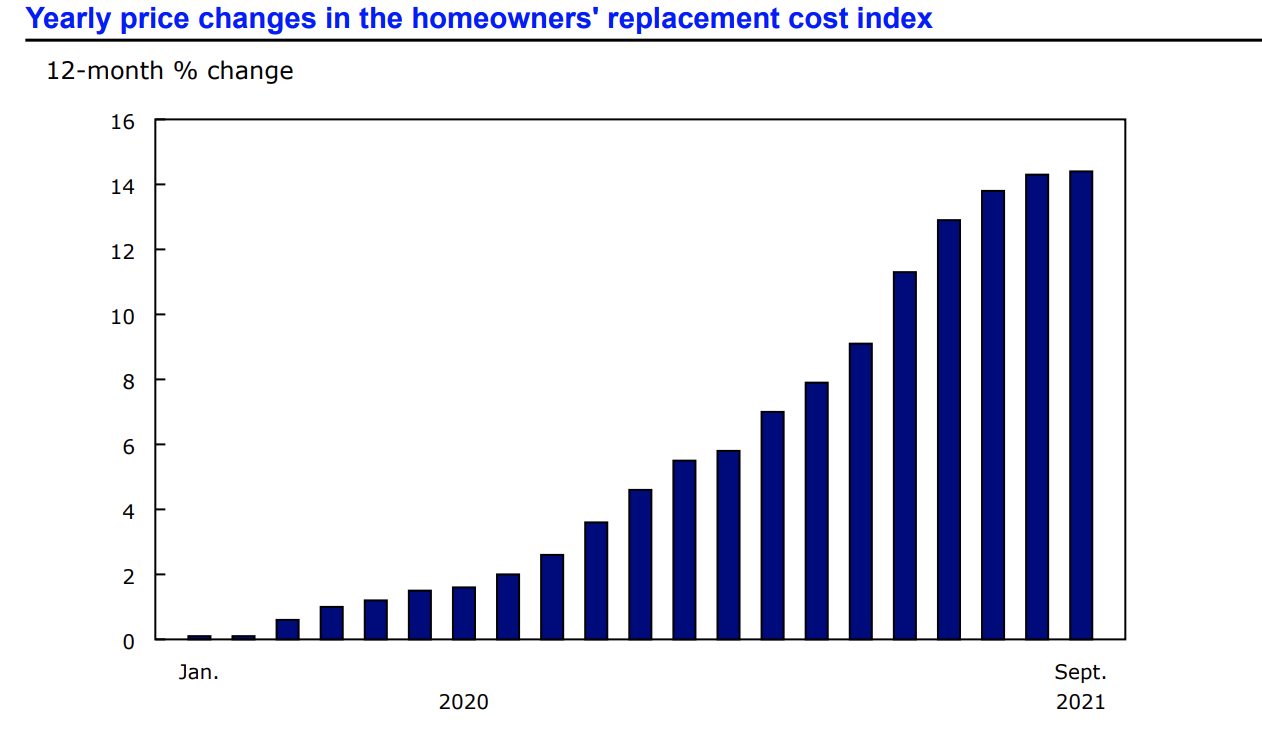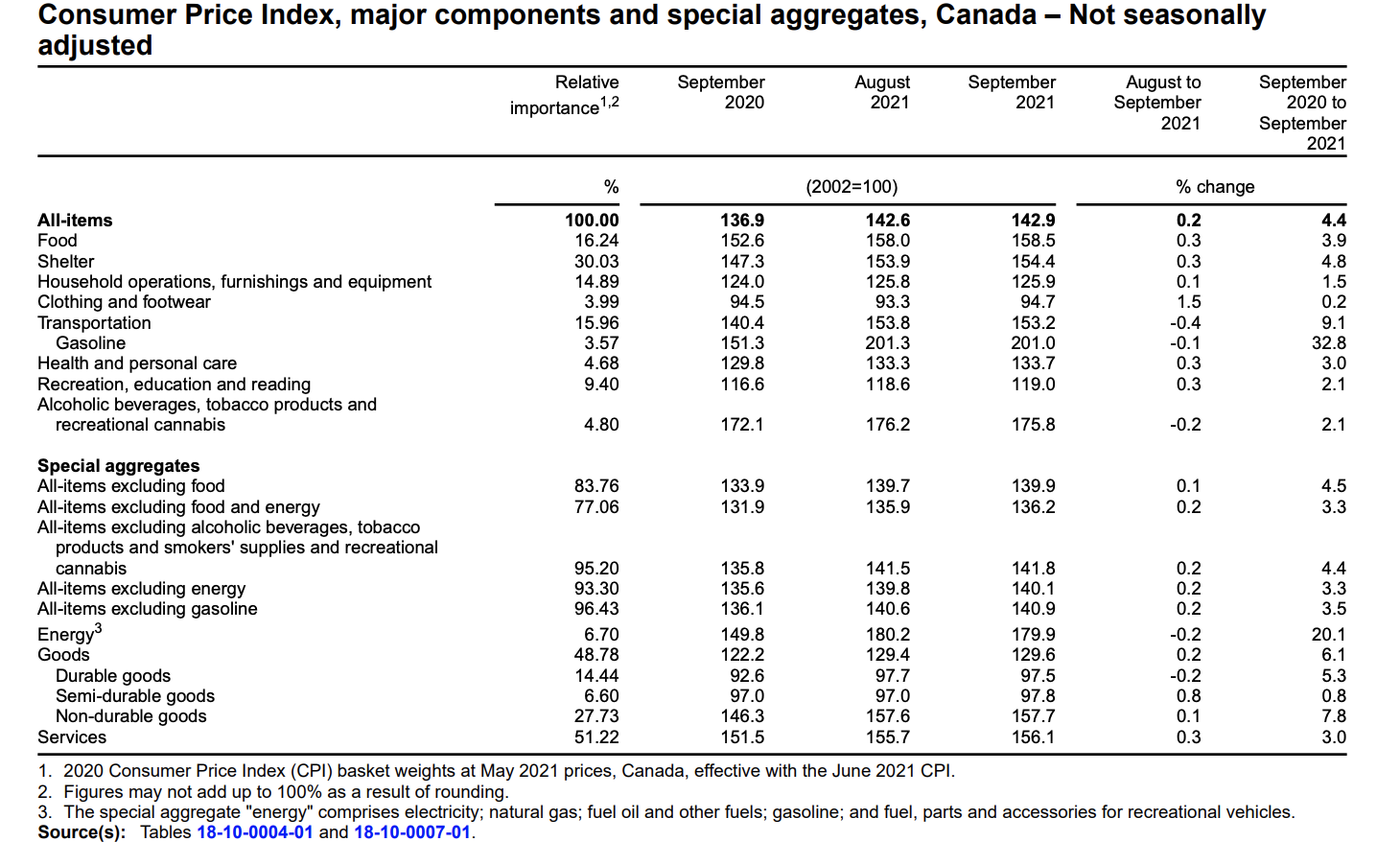The Consumer Price Index (CPI) increased 4.4% in September on a year-over-year basis, reported Statistics Canada. The agency explained that this marked the largest percentage increase since February 2003. Over the last 12-month period, Excluding the price of gas, the CPI increased 3.5% for the month.
“Prices rose year over year in every major component in September, with transportation prices (+9.1%) contributing the most to the all-items increase. Higher shelter (+4.8%) and food prices (+3.9%) also contributed to the growth in the all-items CPI for September,” explained Stats Can in its report.
In September, the monthly CPI rose 0.2% – the same percentage increase seen in August.
“Month-over-month CPI growth has been positive for nine consecutive months,” noted the agency.

(Source: Statistics Canada)
Gasoline
Year-over-year, the price of gasoline skyrocketed 32.8% in September. Yet, on a month-over-month basis, gas prices dropped 0.1% for the month, largely due to uncertainties pertaining to global oil demand and the increasing spread of the Delta Variant around the world.
“The contributors to the year-over-year gain include lower price levels in 2020 and reduced crude output by major oil-producing countries compared with pre-pandemic levels,” stated Statistics Canada.

(Sources: Statistics Canada)
Food
In September, the price of food edged up 3.9%, being one of the largest contributors to the overall rise in the all-items CPI. Over the last 12-month period, food prices increased in virtually every component save for fresh vegetables, which decreased 3.2% for the month.
“The gain in September was led by prices for food purchased from stores, which rose 4.2% in September, following a 2.6% increase in August. Food purchased from restaurants rose 3.1% in September, following a 3.2% increase in August. Prices for meat products (+9.5%) increased in almost every sector in September and rose at the fastest pace since April 2015, following a 6.9% gain in August. Prices for fresh or frozen chicken (+10.3%) and fresh or frozen beef (+13.0%) were up in September, partly due to higher input costs and continued strength in demand,” explained the agency in its report.

(Sources: Statistics Canada)
Shelter
The shelter index increased 4.8% in September over the last 12-month period. The Component index that contributed the most to this rise, was the index for homeowners’ replacement cost, which is correlated to new house prices.
“The homeowners’ replacement cost index, which is related to the price of new homes, continued to increase slightly year over year, rising 14.4% in September after increasing 14.3% in August. Relative to September 2020, price growth continued to trend upward amid higher construction costs and historically low-interest rates,” said Stats Can.

(Source: Statistics Canada)
With regards to the COVID-19 pandemic, and its effect on the Consumer Price Index, Statistic Canada released the following statement:
“COVID-19 and the Consumer Price Index Since April 2020, goods and services in the Consumer Price Index (CPI) that were not available to consumers due to COVID-19 restrictions received special treatments, effectively removing their impact on the monthly CPI. When a good or service became available for consumption again, an adjustment factor was calculated to remove the impact of imputations so that the indexes only reflect observed price movements. More information on these adjustments can be found in the Technical Supplement for the March 2021 Consumer Price Index.
As a result of these adjustment factors, users are advised to exercise caution in interpreting the 12-month change for the next 11 months for the travel tours and air transportation indexes.
In September 2021, special treatments were only applied for cruise-based travel tours, accounting for 0.03% of the 2020 CPI basket. Statistics Canada will continue to monitor the impacted component and will remove these special treatments as it becomes widely available for consumption.
The details of the treatments from April 2020 to March 2021 are provided in technical supplements available through the Prices Analytical Series. Details and other treatment information for April 2021 to September 2021 are available upon request.
Statistics Canada continues to work with price experts, national statistical organizations, and other partners to ensure the data and methods used in the calculation of the official CPI are aligned with international standards”
Source cited: https://www150.statcan.gc.ca/n1/daily-quotidien/211020/dq211020a-eng.htm


